The Best Social Media Marketing Tools to Manage the Crisis
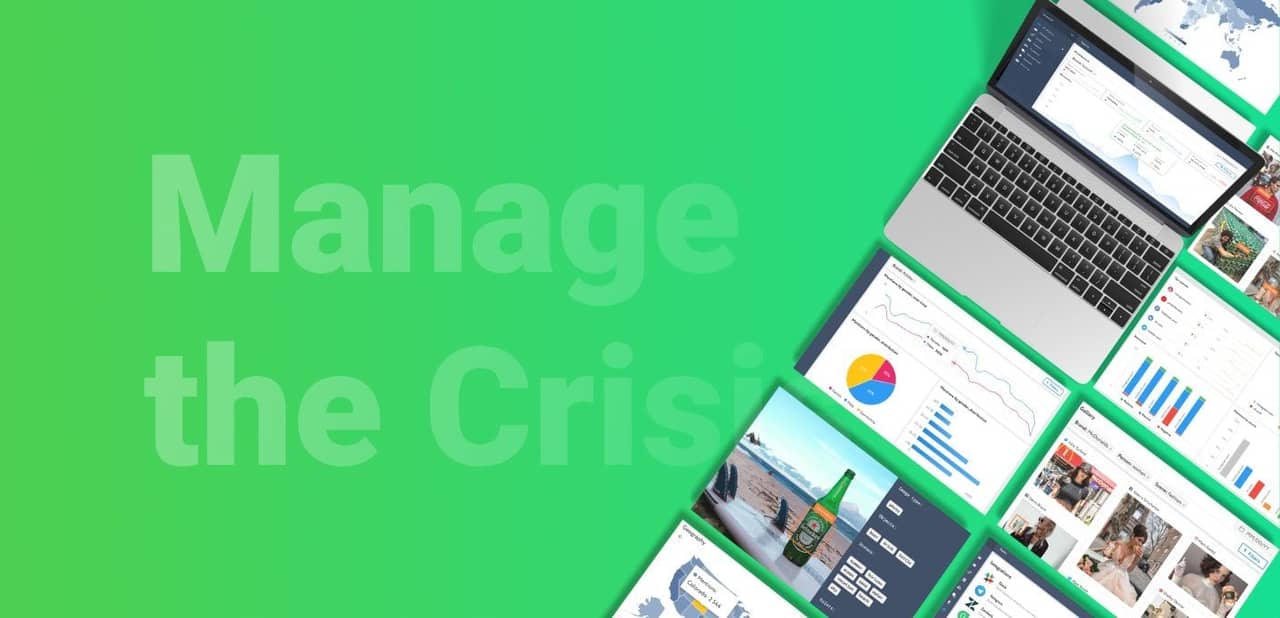
Social media is a blistering mix of negative and positive user discussions, which, however, always give the most explicit understanding of the real situation in the market, as well as in the world. It implies the amplification of the audience's emotions around a particular issue and the spread of information at the fastest speed if compared with any other media channel. Social media has the power brands can hardly ignore, particularly in times of a crisis.
Crisis management is a vital dose of changes and precautions needed to be injected directly into the brand's most sensitive area to start soothing and improving the critical situation immediately. Actually, social media is the most powerful yet sensitive aspect of every brand at the same time. On the one hand, it is the most easily affected by a crisis since social networks are the first place people go to express their opinions, tell about negative experiences, and share anxiety regarding a certain topic or issue. Consequently, it is the first place where a brand reputation can suffer because of a crisis.
On the other hand, social media is the heart, pumping the blood of information throughout the whole web via millions of veins and arteries — user discussions. If you want to incorporate the fast change into your marketing strategy and make the biggest influence on your target audience, then you should start doing it on social networks. They allow you to speak directly to your customers and deliver information in the shortest time.
So, we can understand that crisis management based on effective and timely optimized social media marketing can multiply the healing effect. Here we're going to consider proven practices and tips that will help businesses manage crises effectively using social media.
The Crisis Management Playbook for Social Media Marketers
Set up social listening
It's challenging to manage a critical situation if you don't know where it happens. Social media marketing monitoring tools allow you to listen to your audience and stay updated with the latest online discussions related to your brand. So, you can easily find outbreaks of the negative comments on social media and timely manage the root problem once it has appeared.
Stop posting for a while
You can save much time and significantly benefit from social marketing tools that allow you to schedule posts. But, when it comes to a crisis, it's recommended to stop all your scheduled posts and switch into a monitor-only mode. It will help you prevent the audience's undesirable reaction triggered by a post that has become irrelevant since it doesn't answer the user's most actual questions anymore.
Acknowledge a problem
Once you have found out an issue that will likely go to the public anyway, acknowledge it, saying something, like "Yes, we know that this problem has happened." It will help you avoid the users' messages, like "Hey, a brand! Did you know that…"
Let your customers know that you're already aware of a current unpleasant situation and work hard to tackle it as soon as possible. It's also important to make this statement on that social network where an issue has occurred first. Pay more attention to managing a crisis where it sparks first and only after that — in the rest of the places, infected by negative consequences.
Create a crisis hub with frequently asked questions
Don't force your customers and followers to mess around different channels looking to ask your company how they can manage their problem. It's advisable to create a separate web-page or a microsite with answers to frequently asked questions. Gather all the crisis-related information in one place. It will help you reply to the user's question more quickly by providing a link to already prepared answers. It's an excellent practice to save your time and switch attention to other important areas of management.
Provide a comprehensive response
Once a crisis FAQ page or microsite is developed, and you're in combat readiness to answer your followers' most difficult questions, it's time to publish a post with all the needed information to all your company's social media profiles.
The obligatory points to include are the situation summary and the link to a FAQ page for following updates, relevant hashtags, safety tips, and the estimated time of problem management.
Use images to bring additional information
Emphasize your message with appropriate graphics and visuals, informing users that something goes beyond its usual schedule and standard operations. You can even temporarily change your profile or cover images to make it clear for users what's going on.
Create a "boxing ring" and set there your rules
You might be surprised by this suggestion for your crisis management plan, but sometimes it's crucial to provide users an opportunity to express their negative comments and opinions. It may even be your FAQ section. Let users freely express what they feel toward an issue. How can your company benefit from it? There are four significant advantages.
It's the area of your control and a boxing ring where you can set rules. If you don't create such a communication area, your followers will do it without you, and you may completely lose control over the conversation.
It allows you to find out and monitor a crisis at its early stages.
You can moderate the most unacceptable and offensive (not only for your brand but also for followers) comments if needed or answer them back with a refutation.
It gives you an opportunity to keep most of the negative discussions in one place and avoid spreading across other media channels.
Response no more than twice
Crisis management isn't a game to win but a spectator sport. It's aimed not to persuade anybody but to control the damage. When answering to customers on social media, try not to reply to a negative comment more than twice. It will let all others who will see this conversation understand that your brand tried to communicate constructively, but you also knew when it's the right time to leave. Try to move conversations spinning around the issues that are likely to solve to a private mode (direct messaging, phone, or email communication) after your second answer.
Analyze and learn from mistakes
When a crisis is behind, it's time to analyze. Make copies of all your emails, tweets, status updates, and blog comments. Research your website traffic and search volume patterns formed during a crisis. Ask yourself the key questions, such as: How did our response algorithm work? Were all our employees informed sufficiently? Was our team able to communicate effectively in critical situations? Analyze all the information to be able to build a better crisis management strategy for the future.
Don't Game with a Crisis! Social Media Marketing Mistakes to Avoid
Slow or delayed answering
Guess what customers hate the most. Right, long-waiting. Don't make your followers feel like being on hold in a bank hotline. Organize a team of employees to answer your followers instantly. In case if your team is small, it would be best if you invest in marketing monitoring tools that can help keep up with everything happening to your brand online.
Don't try to save money, not investing in the best social media marketing software. Otherwise, you may pay much more later. The crisis mode requires you to be able to react at no time. It allows you to prevent forming the information vacuum that can be filled with negative comments and speculations around your brand while you aren't simply aware of what's happening to your brand reputation on the media right now.
Public squabbles
When it comes to heated online discussions, there are always many of those who want to add fuel to the flames. Your team must be well-coached to reply to negative comments in a polite, truthful, and calm way. You should attempt to soothe squabbles instead of trying to convince anybody in anything.
If you have detected inflammatory or outright false comments, this is a reason enough to block the user or reach out to him or her directly. Try to move a conversation into a private messaging or offline communication and solve a problem there if possible.
Not to be ready for the next time
Nobody knows when a crisis will knock on your company's door the next time. You must get prepared for any scenario that may play out in the future. At the phase of planning, spend time and effort to create a viable crisis management strategy that will help you react to any occasions immediately. You can tune a content framework and prepare answers for specific situations that may occur. You can't even imagine how much precious time you can save if a situation becomes critical.
Social Crisis Management Examples from Famous Brands
Would you like to see how giants tackle their problems on social media? Here we will consider crisis management lessons learned from world-famous brands.
KLM Royal Dutch Airlines: investing in customer care on social media
Even after 10 years past, KLM Royal Dutch Airlines remains an iconic example of great social crisis management. The company has shown a huge commitment when caring for its customers with the help of social media during the so-called Ash Crisis in 2010.
That was the day the Icelandic volcano erupted and forced almost all the airlines to land their aircraft. While most of the airline companies were hustling around customer problems in almost all the ways possible, KLM focused on providing fast responses to customer requests on social media and poured as many resources there as possible.
The company gladly accepted the help of volunteers and employees from other departments to timely manage the stranded passengers' requests and queries on social networks. They realized that Twitter and Facebook might become the best way to unload the crowded phone hotlines and ticket desks.
KLM updated its status on social media with a call to customers to send their requests via Twitter, and it helped the company tackle the audience's possible frustration caused by long-waiting for a response.


Cracker Barrel: when the best option is silence
When emphasizing the importance of having crisis management frameworks and being "ready for the next time" above, we have meant that you never know when (and where) the crisis can happen. Sometimes, it can occur out of nowhere as it happened to Cracker Barrel.
It started on the day when Brad Reid published a comment on Cracker Barrel's official website asking why the company had fired his wife from the retail-manager position, which she had held for 11 years. Nobody could even imagine that the comment would turn into the most trending hashtag #JusticeforBradsWife, used in millions of posts on social media.


Moreover, other fast-food chains played a joke with Cracker Barrel's situation by using the phrase "Now Hiring Brad's Wife!" on billboards near their restaurants.
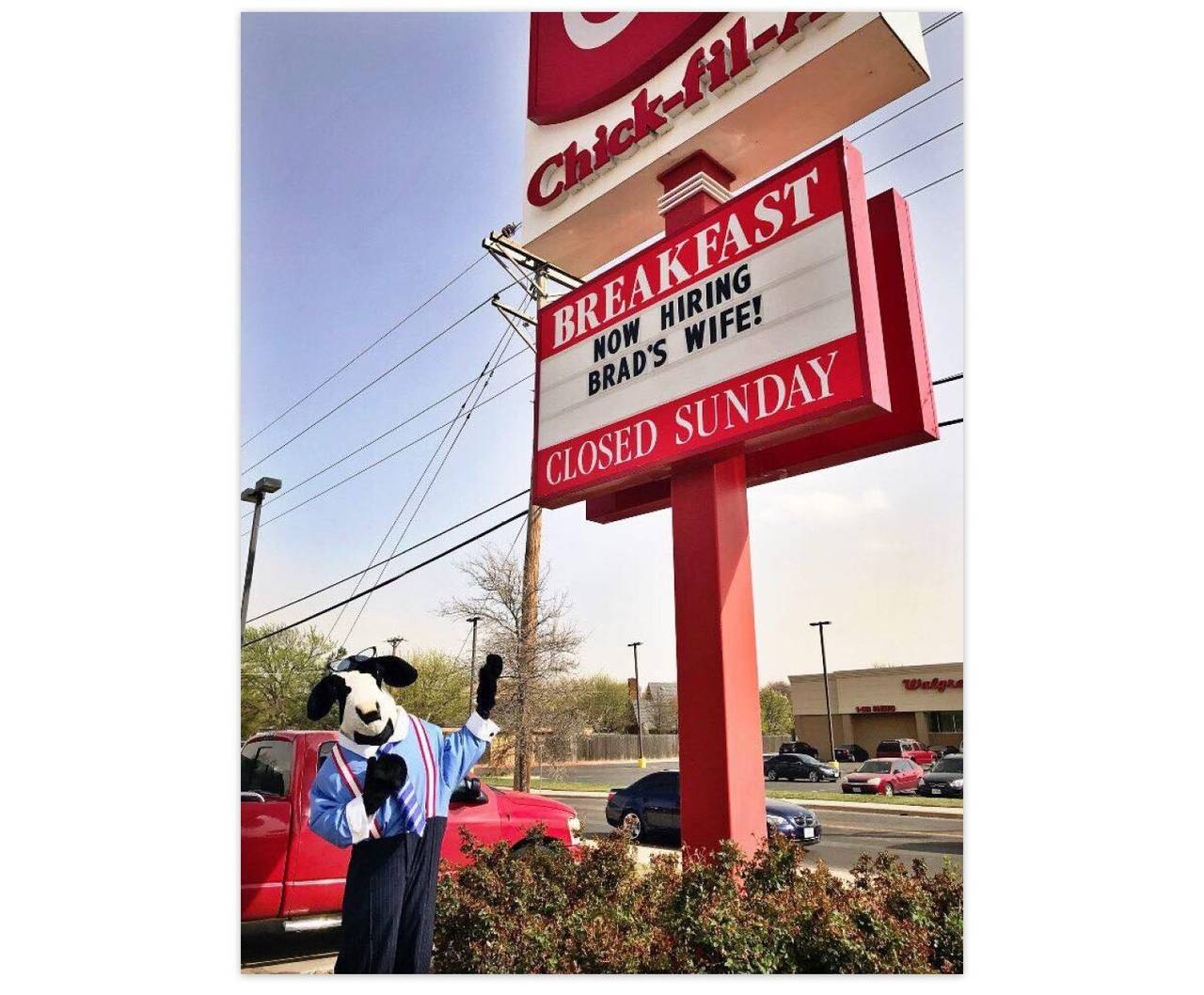

It is an exceptional example when silence on social media becomes the best crisis management technique. At least, it was the best option for Cracker Barrel. The company didn't post any excuse on the media and never publicly addressed the movement of Brad's Wife.
Pepsico: a massive ad campaign stopped
It's a big story from one more big brand. In April 2017, Pepsico launched its massive ad campaign starring Kendall Jenner. According to the scenario of a video ad, the model hands a police officer a Pepsi during the massive social protests.

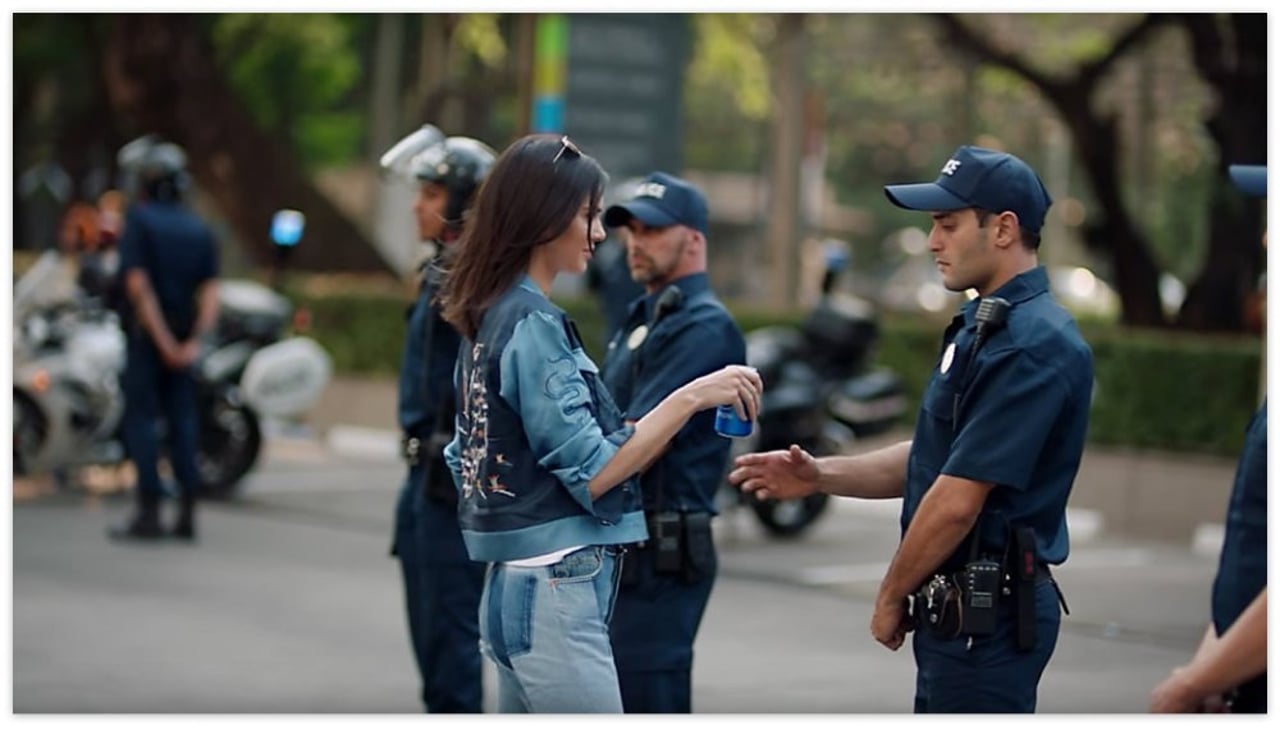
In only 48 hours, the ad got almost 2 million views on YouTube and turned into one of the biggest commercial failures ever. The thing was that Pepsico used imagery from the real Black Lives Matter movement.
"This ad trivialized the widespread protests against the killings of black people by the police." (The New York Times).
In its defense, Pepsico made a public statement saying that it was just a call for people from different groups for peace, harmony, and unity. However, after a while, when the wave of criticism wasn't deceased, the brand decided to stop the ad campaign altogether and published the second post with an apology. The company's quick and straightforward reaction was accepted well by the audience. These tough measurements helped Pepsico to tackle a crisis situation, although it needed some time to recover anyway.
How You Manage Crisis With YouScan
You might wonder how you can handle crises and monitor social media more effectively. YouScan can be the answer for you. It is one of the top social media tools for business aimed to help listen to a target audience on social networks, monitor what people are saying about your brand, competitors, and the industry, receive invaluable customer insights, conduct competitor research, and much more.
YouScan may become your magic wand for more effective social media marketing, especially in times of a crisis. Let's consider here how it can help you in crisis management.
Visualize the audience's reaction to your brand's initiatives in sentiment distribution charts
YouScan has an advanced analytics dashboard with plenty of filters that allow you to access precise information about user engagement based on likes, reposts, and comments related to a particular brand.
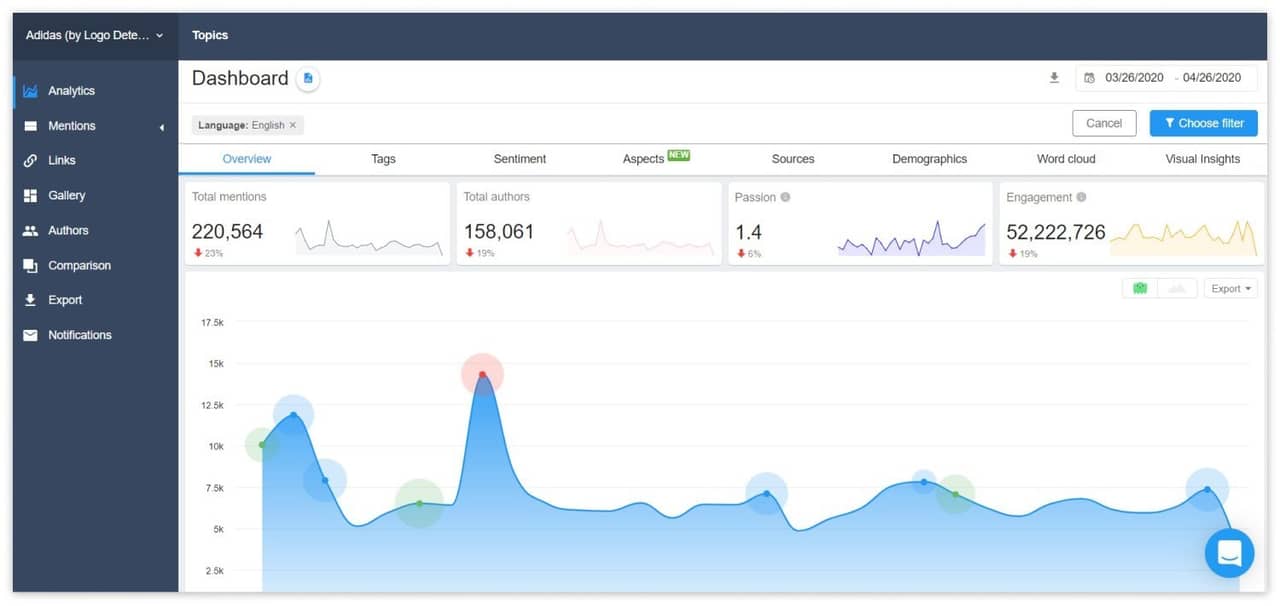

You can also select to monitor insights by sentiment. It will help you see the sentiment distribution and define the outbreaks of negative brand mentions over the specified time. You can easily track the audience’s reaction (sentiment) to your newly launched campaign or event and incorporate immediate changes if needed.

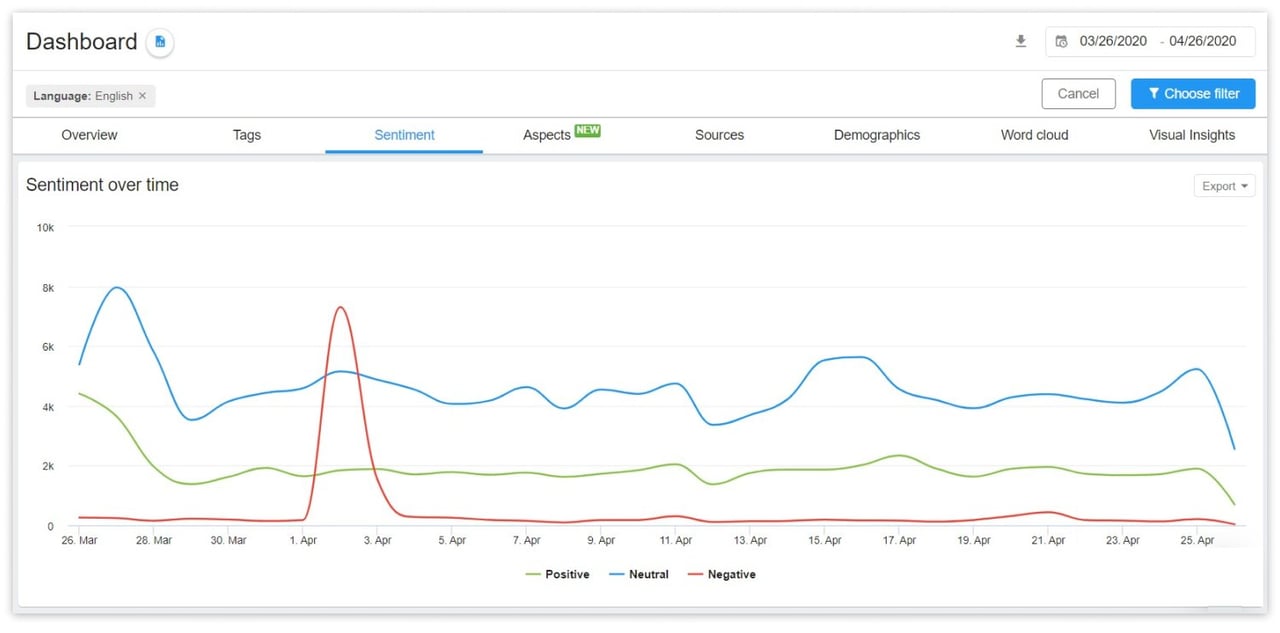
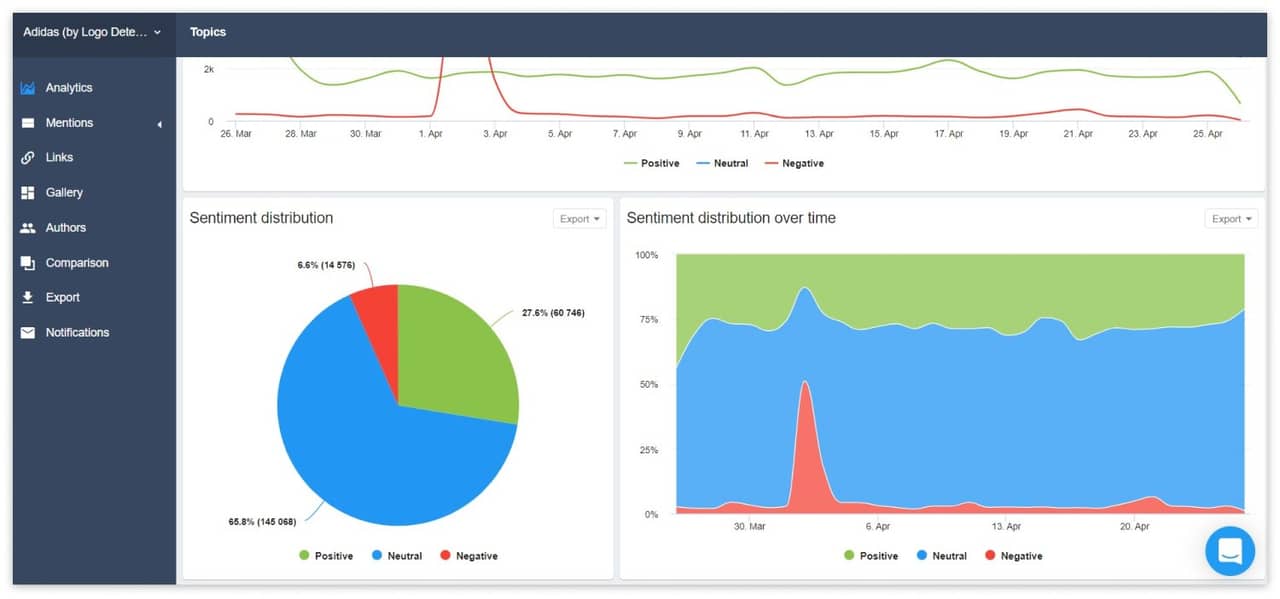

Identify trending topics of negative brand discussions
You can investigate what has caused a crisis (displayed as a sudden growth of negative mentions in the chart) by hovering over the red "trend bubble" in the top point on the main graph, as it is shown below. It will display a short overview of a topic or "negative" trend, around which most of the negative user conversations have sparked.
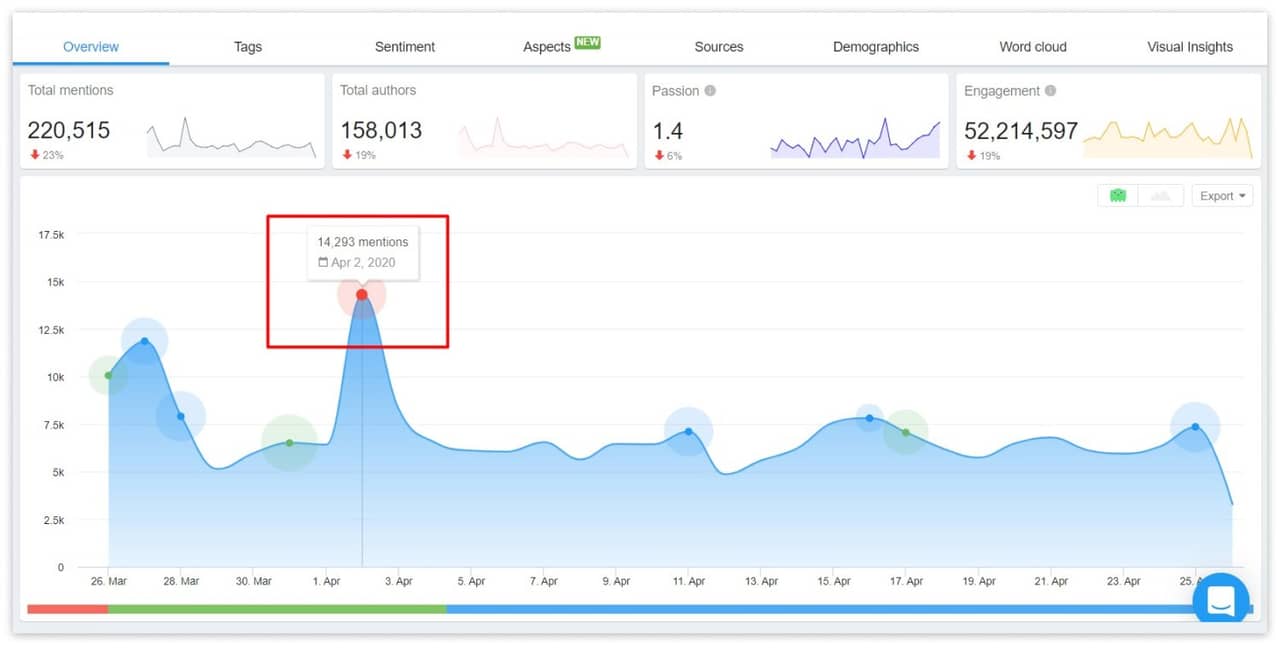

Determine where you should act first
Select "Sources" in a dashboard to view the charts displaying the distribution of brand-related user conversations across different media channels. In "The Sentiment by Source" chart, you can clearly see sources with the biggest ratio of negative brand mentions. They are likely the first places where you should start deploying crisis management initiatives.
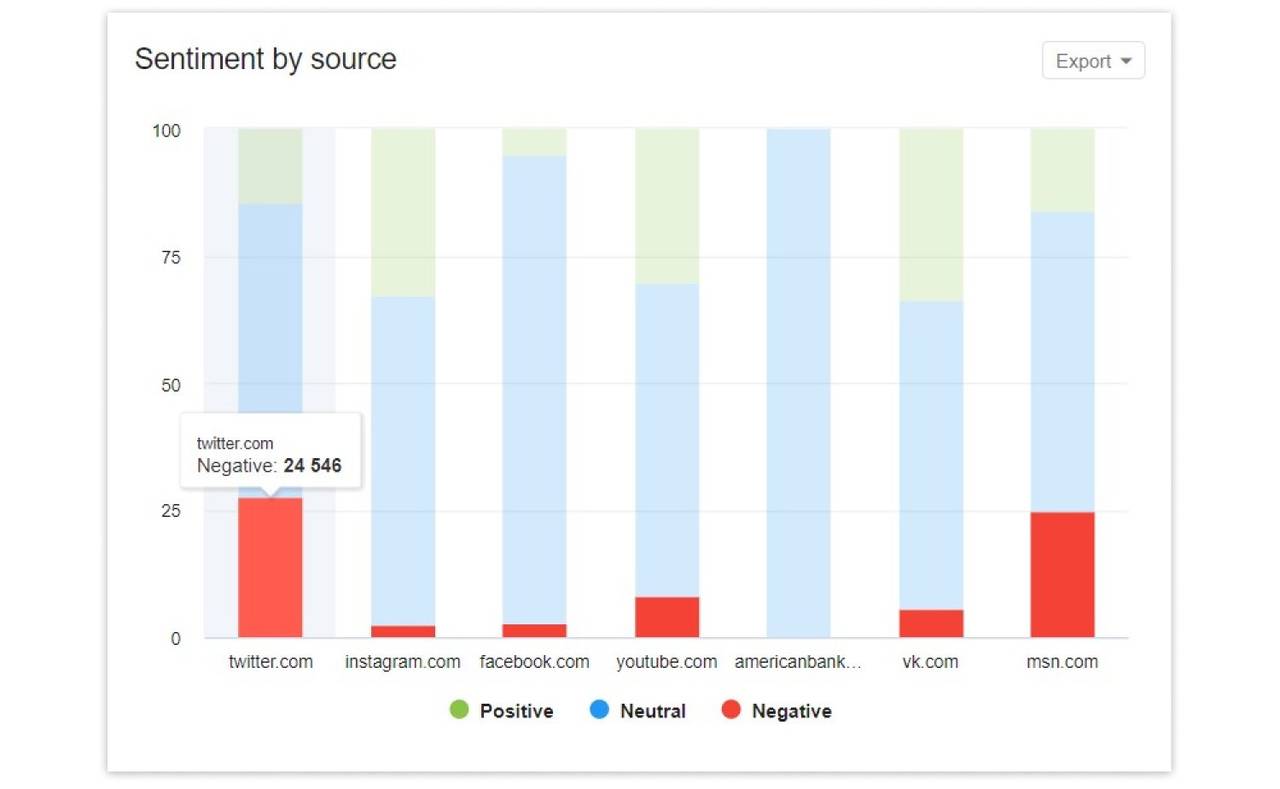

Monitor negative brand mentions
You can track brand mentions filtered by sources, languages, sentiment, or the subject in the "Mentions" section on a dashboard. It's particularly useful to apply a filter of negative sentiment and view all the negative brand mentions during a crisis. It will give you more insights about the subject of the audience's anxiety or criticism in a specific situation. Once you define user negative comments, you can immediately reply to them on the company's behalf and try to mitigate an issue.
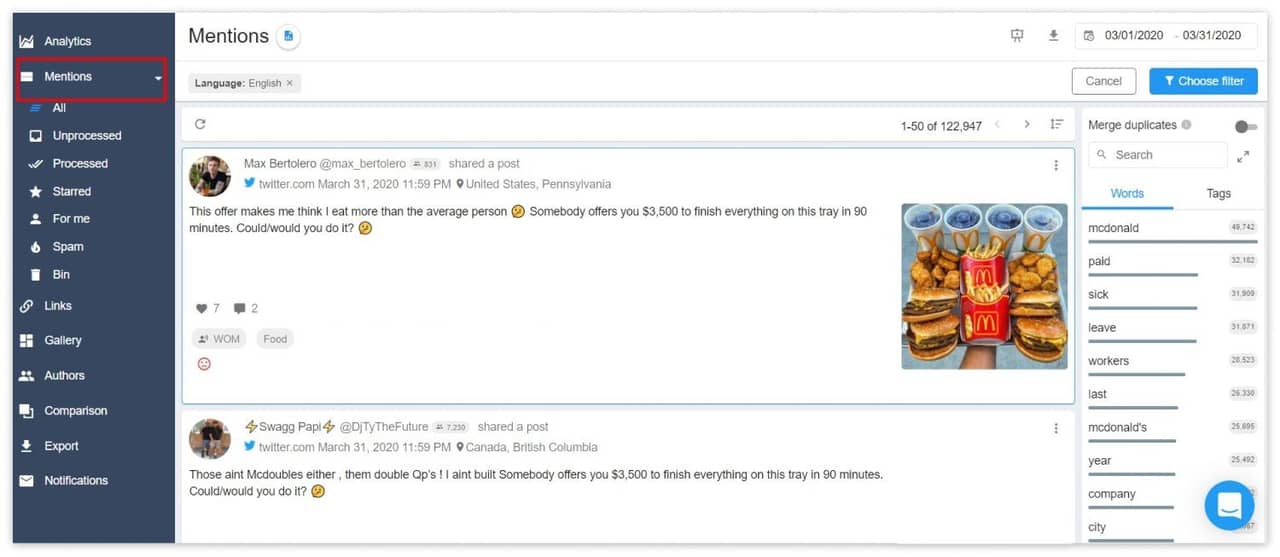

Track "visual" brand mentions and reputation infringement using logo-recognition
Sometimes users publish posts about brands without mentioning them via an at-sign (@) or using a relevant brand-related tag. Fortunately, YouScan has a built-in logo-recognition tool that recognizes a brand logo in the images and collects such user posts in one gallery.
Similarly to textual brand mentions, you can filter "visual mentions" by different categories and define posts in which someone has mentioned a company in the negative context or made a brand reputation infringement, using a logo or other branding imagery illegally.
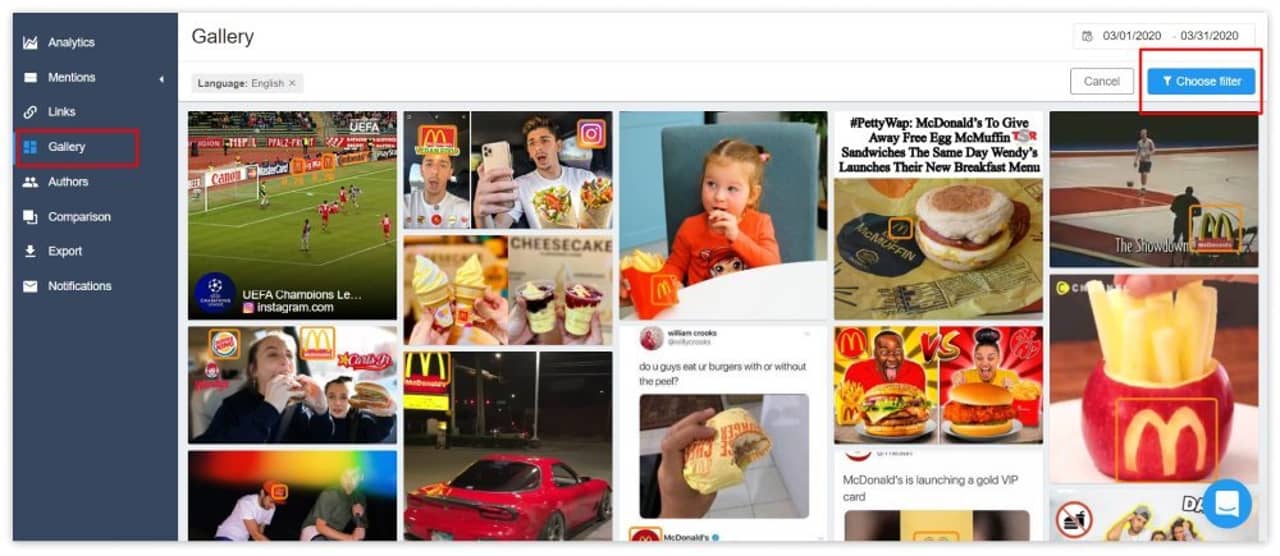

Level up your customer support
YouScan allows you to enhance your customer care and improve communication with your audience on social media. You can integrate YouScan with your corporate communication messengers, HelpDesk, and CRM systems. This option lets your team create customer support tickets right in the YouScan interface and assign them to your managers who will provide further assistance for your customers.
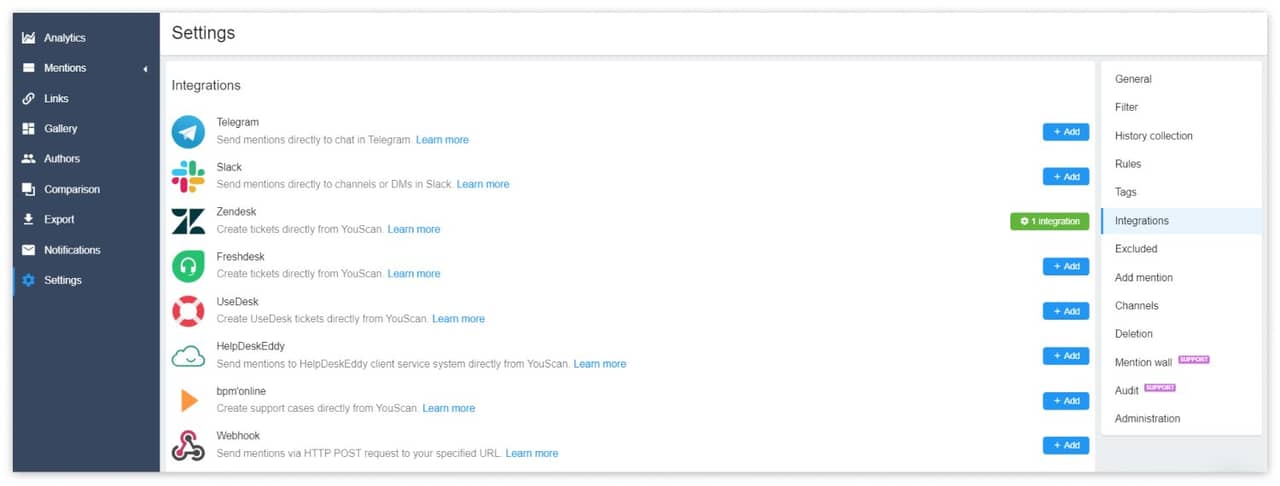

It will help you communicate with customers more effectively what is particularly important in critical situations. Also, you can add notes to some brand mentions, categorize them by adding to favorites, marking as spam, or even share them using integration with other channels.
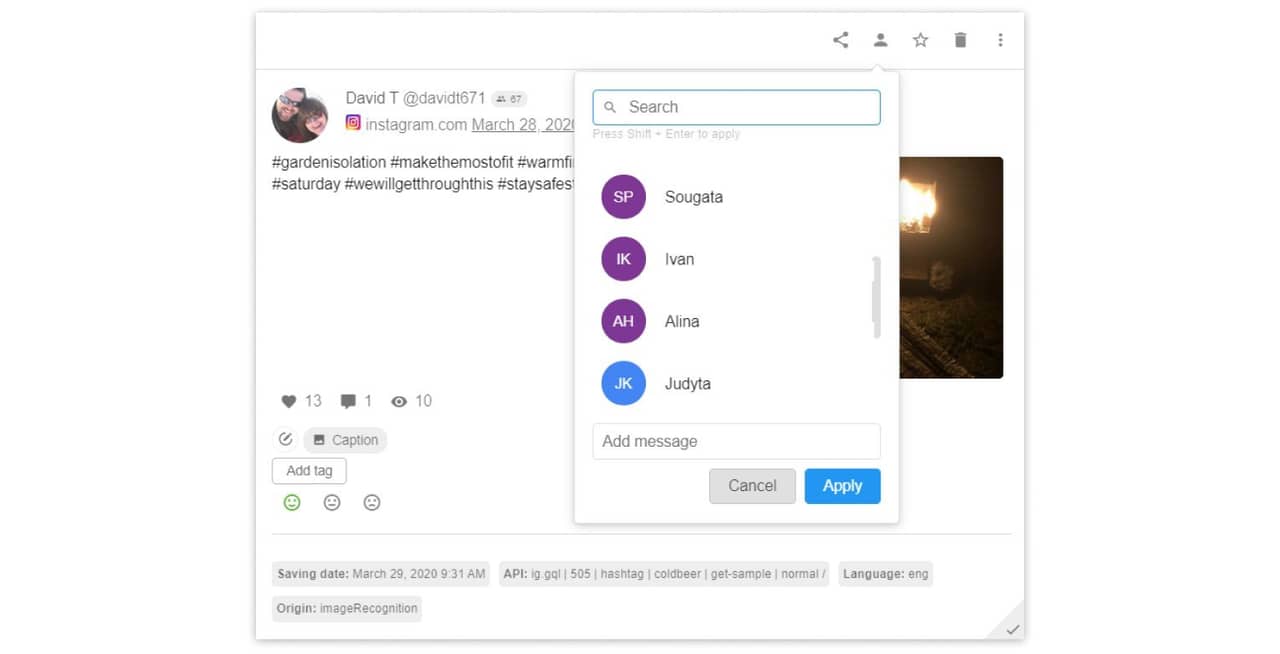

Stay in the know with the most important
In the "Notifications" section in a dashboard, you can set daily, weekly, or monthly reports. You can also enable smart alerts that will email you with all the most critical mentions and the latest updates about everything important happening to your brand online, such as spikes in engagement, sudden growth in mentions, etc. It will help you stay highly responsive to the most critical changes in the market and eliminate a crisis.
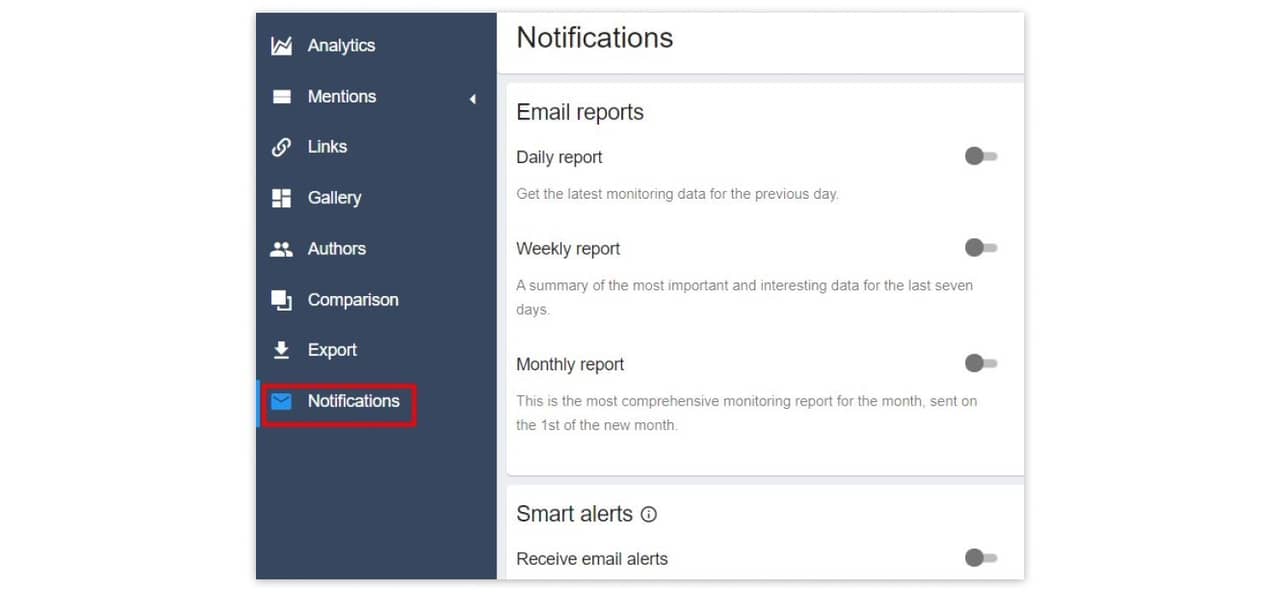

Conclusion
As mentioned above, crisis management is not a game to win but a spectator sport and a fight to soothe a critical situation. When a crisis knocks on your door, we recommend not attempting to convince your customers in anything or saying sorry but do everything possible to suggest alternatives and help people solve their problems. The most loyal audience is a heard and understood audience.
We hope that this collection of tips, practices, insights, and use cases will help your brand hear your customers and provide the best crisis management possible.




